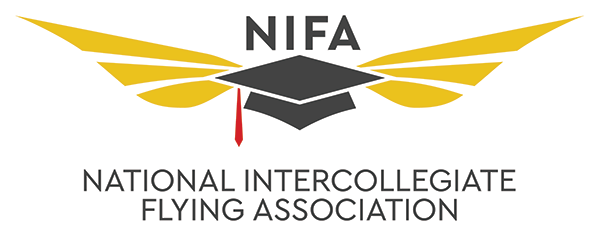Individual Events & Awards

NIFA is proud to present the Achievement Award to qualified individuals. This award recognizes the recipient’s academic accomplishments, aviation involvement and community service. Three monetary awards will be presented. Please CLICK HERE to access the appointment calendar to schedule your Achievement Award interview. Once you have read the above qualifications, please click the button below to access the application form for the Achievement Awards. There is no longer a requirement to have an instructor certificate. Participants are allowed if they are enrolled in, but not currently finished with, a course in flight instruction. Also, those with a ground instructor certificate or who may be finishing a course to receive a ground instructor certificate are welcome to participate. Verification of enrollment will be asked prior to each scheduled event time. More than one person per team may participate, depending on schedule availability. All teams will first have the chance to schedule their primary participant. Then, starting on Saturday May 11, any remaining appointment slots will be available for teams to schedule subsequent participants if they wish. The topic for the event will be shared by the event judge at your scheduled interview time. Please CLICK HERE to access the appointment calendar to schedule your CFI Event. ***NOTE: PLEASE DO NOT SCHEDULE WITH LESS THAN 24 HRS NOTICE WITHOUT PRIOR APPROVAL FROM THE EVENT JUDGE*** Each NIFA member school may nominate their coach for the Coach of the Year Award. The National Intercollegiate Flying Association Coach of the Year Award is presented annually at the National SAFECON Banquet to the coach who exemplifies the standards and goals set forth in the purposes of NIFA. See NIFA By-Law 0.2. Qualifications and Procedures: The coach does NOT need to be from a team competing at the current National SAFECON. A team of judges will evaluate the written nomination letters. Candidates are scored on a 50-point scale. Judging Criteria: In a letter with separate paragraphs addressing the criteria, please tell NIFA why your coach is deserving of this award. The criteria to be addressed are: The Collegiate Aviation Progress Award is awarded to the most improved school at SAFECON. Please click here to view the scoring criteria for this award. Each team may nominate one member as their “Outstanding Team Member.” You will only be able to enter one name from your team, so do not submit your team’s name until you have made your final decision. This award is presented to the team at SAFECON who has demonstrated the highest levels of good sportsmanship. Each team present at SAFECON may cast one vote for another team. Please submit your nomination by clicking the button below.NIFA ACHIEVEMENT AWARDS
Interview Question Format & Guide
CANDIDATE QUALIFICATIONS:
PROCEDURES:
DEADLINE FOR APPLICATIONS: Monday, May 6, 2024 at 11:59PM CDT.
DEADLINE FOR SCHEDULING INTERVIEWS: Friday, May 10 2024 at 11:59PM CDT.
Submission will be accepted until 5PM CDT Friday, May 17th!
CLICK HERE TO SUBMIT YOUR NOMINATION
Submissions will be accepted until 5PM CDT Friday, May 17th!
CLICK HERE TO SUBMIT YOUR NOMINATION
Submissions will be accepted until 5PM CDT Friday, May 17th!
CLICK HERE TO SUBMIT YOUR NOMINATION










